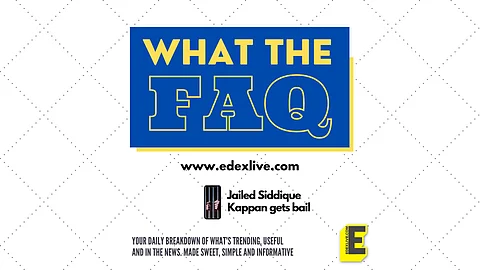#WhatTheFAQ: Jailed for 700+ days, journalist Siddique Kappan gets bail. Why was he arrested?
Siddique Kappan, who works as a reporter for the Malayalam news portal Azhimukham, was arrested by the Uttar Pradesh police on October 5, 2020, while he was on his way to Hathras, where a 19-year-old Dalit girl was allegedly gang-raped by four men. The Supreme Court on Friday, September 10 granted him bail after he was jailed for more than 700 days.
But why was he arrested and what were the allegations levelled against him? How significant is the Supreme Court’s bail judgment?
Why was he arrested?
Siddique Kappan was headed to Hathras to report on the rape of a 19-year-old girl when the UP police arrested him and charged him under the stringent Unlawful Activities Prevention Act (UAPA) for alleged terror funding. During the court hearings, Senior advocate Mahesh Jethmalani, appearing for the state government, claimed Kappan has links with the Popular Front of India (PFI), which is a banned organisation in Jharkhand, and there was evidence of him having met certain people belonging to the group with the motive of inciting riots in sensitive areas, as per a report by PTI.
The PFI had been accused in the past of funding protests against the Citizenship Amendment Act (CAA) across the country, as stated by PTI. The senior lawyer also referred to the amount of Rs 45,000 allegedly received by Kappan from PFI for inciting riots as per PTI. Kappan however, maintained that he was only going to report and perform his duties as a journalist.
What was the Hathras case?
The 19-year-old Dalit woman was allegedly gang-raped by four men belonging to the Thakur community on September 14, 2020, reports stated. She succumbed to her serious injuries two weeks later in New Delhi, triggering nationwide outrage and protests. Following her death, authorities in Hathras secretly cremated her body late in the night on September 30, 2020 and her family was allegedly locked up inside their house for refusing to consent to the cremation.
What did the Supreme Court say in its judgment?
“Every person has the right to free expression,” the Supreme Court said while granting bail to the journalist. The court also took note of the submissions of the UP government and laid down several conditions for bail, including that he will have to remain in Delhi for the next six weeks after release from prison in Mathura and report to Nizamuddin police station in Delhi on Monday every week, the report by PTI stated.
“He is trying to show that victims need justice and raise a common voice. Is that a crime in the eyes of law?” Chief Justice of India (CJI) UU Lalit asked, referring to the widespread protests against the incident that had sparked massive outrage, as per PTI.
"Similar protests (in Nirbhaya case) were there in 2012 at India Gate, which led to a change of law. Till now you have not shown anything provocative," the bench said, as per PTI.
Several journalist associations welcomed the bail order, although they said that the justice had been delayed. The Kerala Union of Working Journalists (KUWJ) said the bail order was historic in the context of the continuing attacks against the freedom of the press and independent journalism, as per PTI.
What are some other cases of attack on the freedom of the press?
A record 293 journalists were jailed for their work globally in 2021, a report by the Committee to Protect Journalists (CPJ) revealed.
Another study called Behind Bars: Arrest and Detention of Journalists in India 2010-20, found that 154 journalists were arrested, detained or interrogated between 2010 and 2020 in India.
Only recently, Mohammed Zubair was arrested after a First Information Report (FIR) was registered against him based on a Twitter post which, “hurt Hindu sentiments”, a Twitter user had alleged. He, however, was granted bail on July 20, 2022 and the Supreme Court had ruled then as well that, “The existence of the power to arrest must be distinguished from the exercise of the power of arrest”, and that the latter “must be pursued sparingly,” according to reports.
Another journalist who has been arrested and is still in jail is Manan Gulzar Dar, who was detained by the Jammu and Kashmir police in October 2021 and the National Investigation Agency (NIA) accused him of working with terrorist organisations. He is still under investigation under the UAPA for conspiring “both physically and in cyberspace” and planning terror activities in Jammu and Kashmir, according to a report by CPJ.
Another journalist Gautam Navlakha is still in jail for allegedly delivering “inflammatory speeches” at the Elgar Parishad conclave, held at Shaniwarwada in Pune on December 31, 2017, which police claimed triggered violence the next day near the Koregaon-Bhima war memorial.



